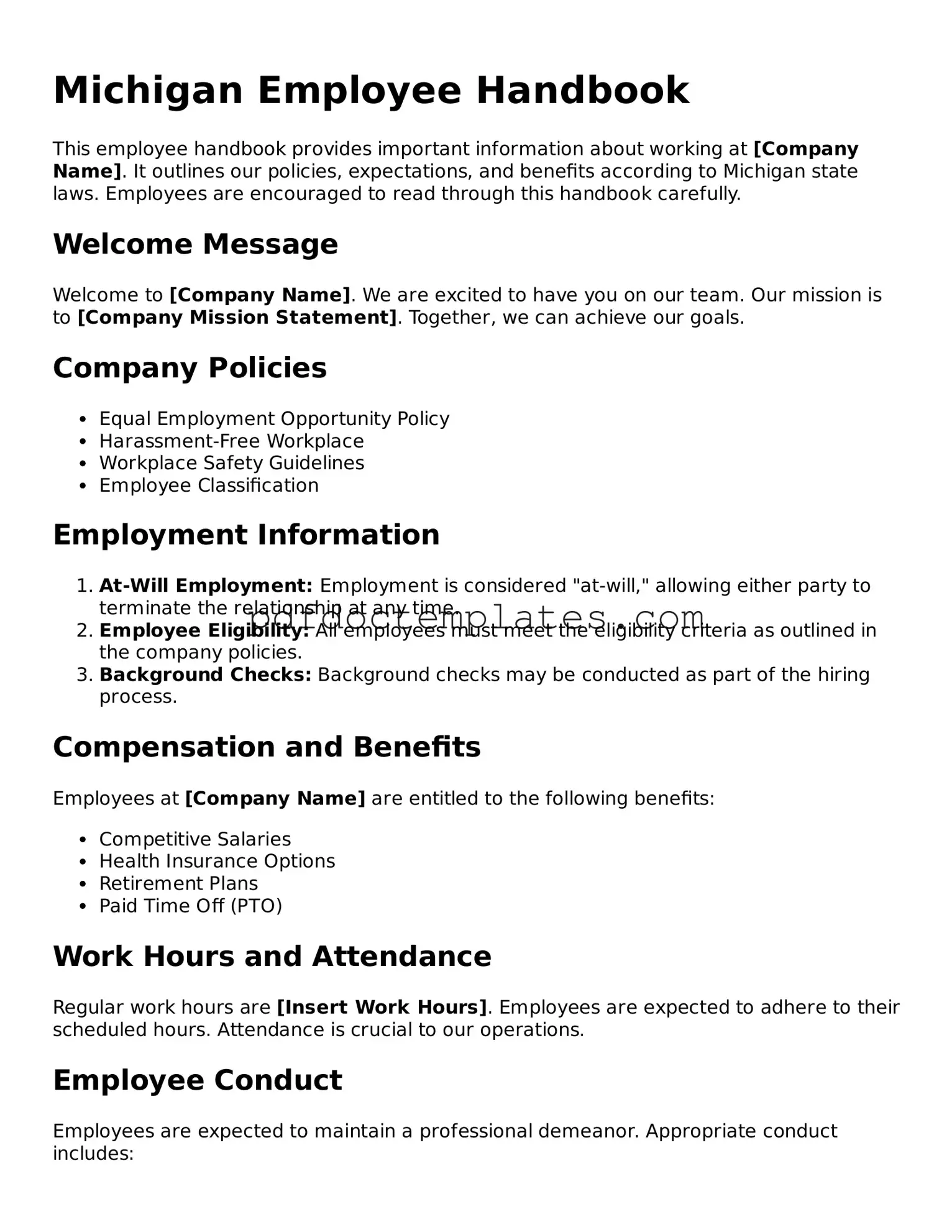Michigan Employee Handbook
This employee handbook provides important information about working at [Company Name]. It outlines our policies, expectations, and benefits according to Michigan state laws. Employees are encouraged to read through this handbook carefully.
Welcome Message
Welcome to [Company Name]. We are excited to have you on our team. Our mission is to [Company Mission Statement]. Together, we can achieve our goals.
Company Policies
- Equal Employment Opportunity Policy
- Harassment-Free Workplace
- Workplace Safety Guidelines
- Employee Classification
Employment Information
- At-Will Employment: Employment is considered "at-will," allowing either party to terminate the relationship at any time.
- Employee Eligibility: All employees must meet the eligibility criteria as outlined in the company policies.
- Background Checks: Background checks may be conducted as part of the hiring process.
Compensation and Benefits
Employees at [Company Name] are entitled to the following benefits:
- Competitive Salaries
- Health Insurance Options
- Retirement Plans
- Paid Time Off (PTO)
Work Hours and Attendance
Regular work hours are [Insert Work Hours]. Employees are expected to adhere to their scheduled hours. Attendance is crucial to our operations.
Employee Conduct
Employees are expected to maintain a professional demeanor. Appropriate conduct includes:
- Treating colleagues with respect
- Adhering to company policies
- Reporting any unethical behavior
Discipline Policy
Inappropriate conduct may result in disciplinary action. Steps of disciplinary action include:
- Verbal Warning
- Written Warning
- Termination
Acknowledgment of Receipt
By signing below, you acknowledge that you have received and read the employee handbook. Please sign and date below:
Employee Signature: ____________________________
Date: ____________________________
